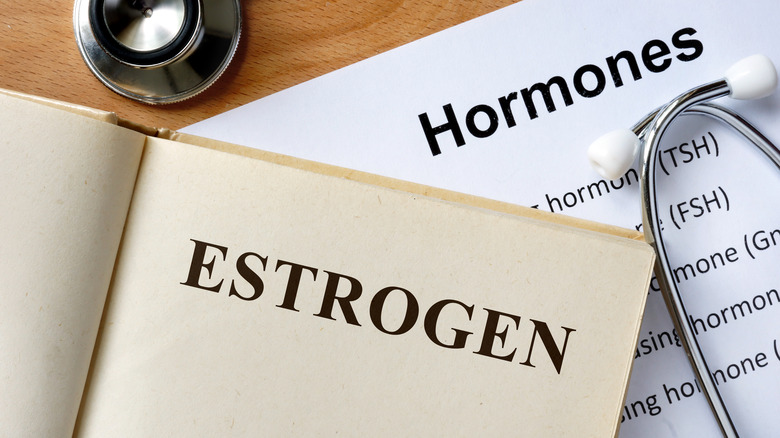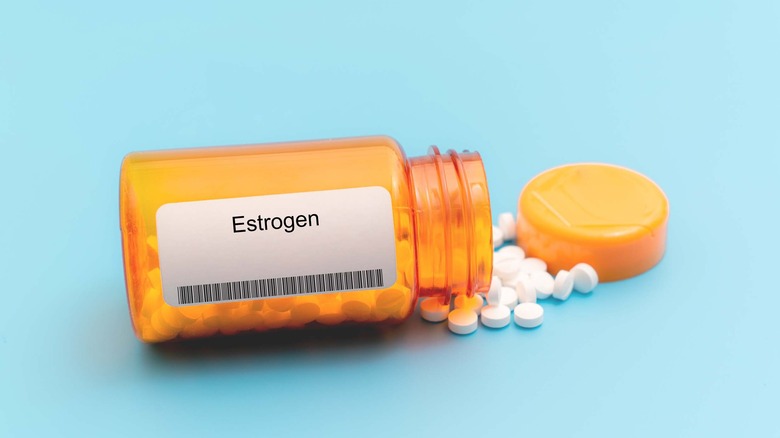The Types Of Estrogen Explained
The most common perception of estrogen is that it is a reproductive hormone in women. It should be noted, however, that men also produce estrogen. Although men produce estrogen at lower levels than women, their bodies require the hormone to function properly.
Men with high estrogen levels may experience erectile dysfunction and fertility challenges, or may have experienced puberty delays (per Healthline). For women, adverse effects can also occur when the body produces too much estrogen. Everyday Health explains that high estrogen levels in women can contribute to weight gain, noncancerous lumps on the breasts, and decreased libido, among other symptoms.
In addition to being a reproductive sex hormone related to fertility, estrogen plays a critical role in various parts of the body. According to the University of Rochester Medical Center, the hormone helps keep bones healthy and strong, and may protect against heart disease and osteoporosis. Following menopause, women may be more vulnerable to heart disease due to decreased estrogen production, and the center recommends speaking with your doctor about ways to keep your heart healthy.
Emotional regulation may also be influenced by estrogen. The hormone is involved in the production of endorphins, as well as increasing levels of serotonin (per WebMD). However, women whose bodies are actively producing estrogen are more likely than men or postmenopausal women to experience depression or anxiety. Needless to say, estrogen is highly complex and researchers continue to have a lot of unanswered questions regarding its role in emotional regulation.
The three major estrogens
Although you may have heard of estrogen, it is less commonly known that there are distinct types of this hormone that play different roles throughout your life. Estradiol is the most powerful form of estrogen that is active during reproductive years (per Society for Endocrinology). In women, estradiol is primarily produced in the ovaries, though it is also produced by the placenta in pregnant women. Estradiol influences the release of an egg during ovulation in a woman's menstrual cycle. It also thickens the uterine lining in preparation for implantation in case the egg is fertilized. Through an enzyme called aromatase, testosterone can be converted into estradiol in men, notes The Testosterone Centers of Texas.
During pregnancy, the body will produce increased levels of estriol, another form of estrogen. The Cleveland Clinic reports that everyone produces estriol, but that unless a person is pregnant, estriol levels are so low that they are almost undetectable. A crucial role of estriol is to help the uterus grow and to prepare the mother's body for the birthing and breastfeeding process.
As described by the Cleveland Clinic, the least potent estrogen is estrone. Estrone has the special ability to convert into estradiol when the body is in need of a more powerful estrogen. This form of estrogen increases after menopause in women, and is the only form of estrogen that continues to be naturally produced once a woman stops having her periods.


